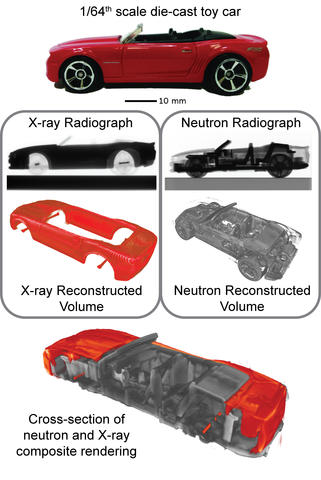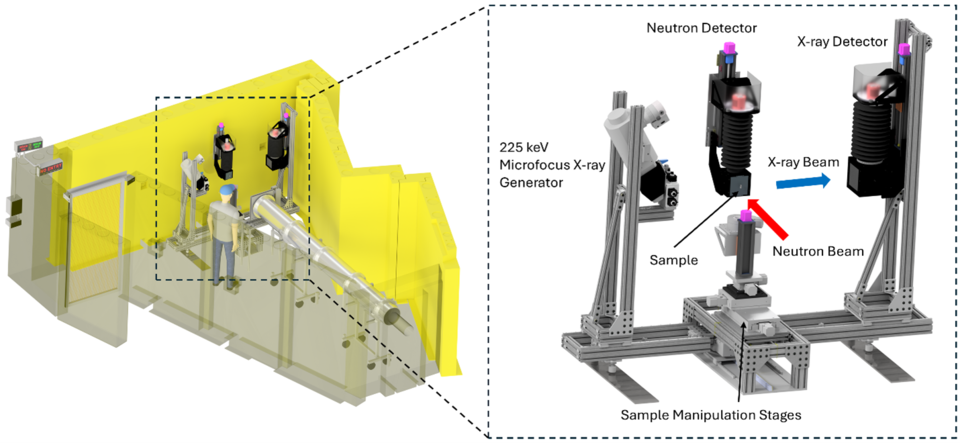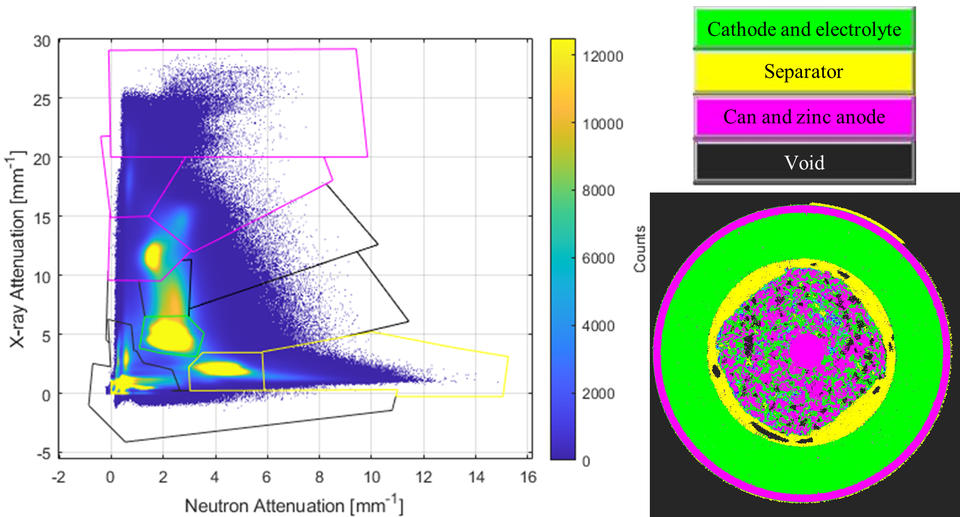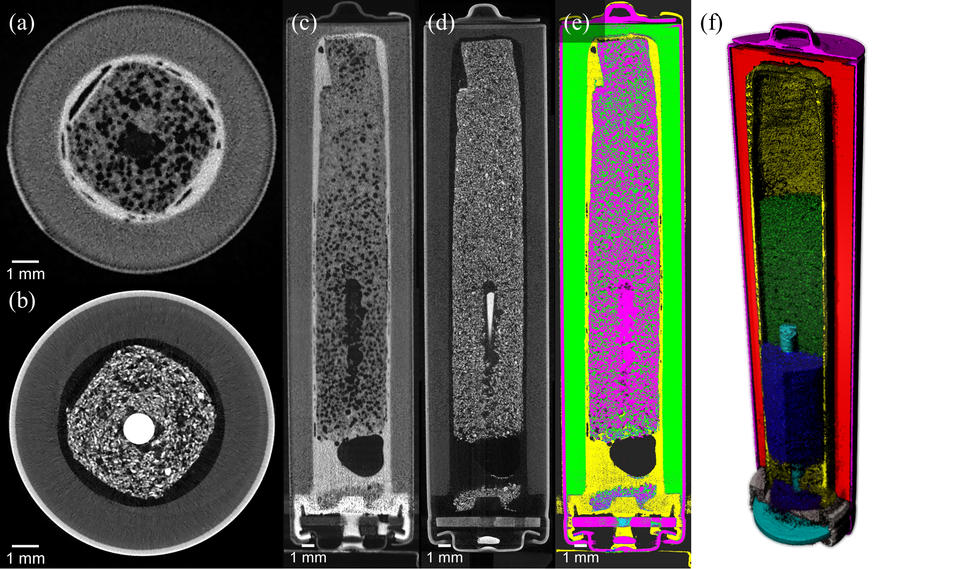Summary
The NIST NeXT detector is the first imaging system to combine the power of both neutron imaging and x-ray 3-D tomography into a powerful, single-pass probe for materials structure and composition analysis. This novel technology has been applied to research in lithium-ion batteries, automotive hydrogen fuel cells, concrete, geochemistry, rock mechanics, and soil science, among others. The continued development of analysis tools for the method will push the speed and accuracy at which samples can be segmented facilitating its use in more materials science and engineering research.
Description

Figure 1: Die-cast toy car with a zinc alloy body, steel axles, and plastic wheels and interior components. This example shows the nearly opposite views seen by neutrons and X-rays.
Neutrons and X-rays are complementary, nondestructive, penetrating probes of matter. X-rays interact with the electron cloud of atoms and therefore sees increasing attenuation with atomic number while neutrons interact with the nuclei resulting in a very scattered pattern with atomic number. The differences in material interaction can be seen using a die-cast toy car in Figure 1.
For samples that evolve with time or undergo stochastic processes, it is not possible to image with neutrons and X-rays at different facilities as the sample will change between scans. To solve this issue, the BT-2 Neutron Imaging Facility and NG6e offer simultaneous Neutron and X-ray Tomography, NeXT. NeXT orients a microfocus X-ray tube perpendicular to the neutron beam which allows both modalities to image the sample at the same time. When captured simultaneously, it is possible to directly fuse the two datasets to leverage the full complementarity of the two probes. Figure 2 shows the position of the NeXT system at the 6 m sample position in BT-2 and provides a detailed view of the system and its components [https://doi.org/10.1063/1.4989642].

System technical details
- X-ray generator:
- BT2: 225 keV peak energy microfocus X-ray tube, tungsten anode, 3 µm minimum spot size, 300 W maximum power
- NG6: 150 keV peak energy microfocus X-ray tube, tungsten anode, 7 µm minimum spot size, 75 W maximum power
- Spot size/resolution tied to anode power which must remain low to achieve highest resolution targets. Raising anode power produces more X-ray intensity which allows for faster scan times.
- X-ray detector: P43 gadolinium oxysulfide scintillator screen mounted in mirror box, various CMOS cameras available, final resolution set by lens reproduction ratio
- In typical operation the X-ray final resolution is matched to the neutron detector, 3-5 projection images are taken at each projection angle during a tomography scan
- Neutron and X-ray detectors can be independently operated with independent control of resolution, exposure time, and number of images taken to fit needs of experiment
- X-ray system can be operated during reactor outages allowing X-ray only work to be conducted during reactor refueling
Tools for neutron/X-ray data fusion:
In support of the NeXT system, the neutron imaging team continuously develops tools for data fusion, the process by which the neutron and X-ray datasets are combined and analyzed together. A registration tool provides volume registration to account for the 90° offset in orientation and small differences in translational position and pixel pitch due to how the reconstructions are performed. For high resolution scans or dynamic scans that require short exposure times that may suffer from higher levels of noise in the reconstructed volumes, a tool allows for optimization of multiple filtering algorithms to denoise the volumes prior to segmentation. Finally, a bivariate histogram segmentation tool allows the user to load two registered volumes and then draw polygon regions of interest on the histogram to quickly label phases in the 3D volume as shown in Figure 3 below. The histogram data was generated from a AAA alkaline battery that is shown in more detail in Figure 4 below [ https://doi.org/10.1117/12.2569666].



